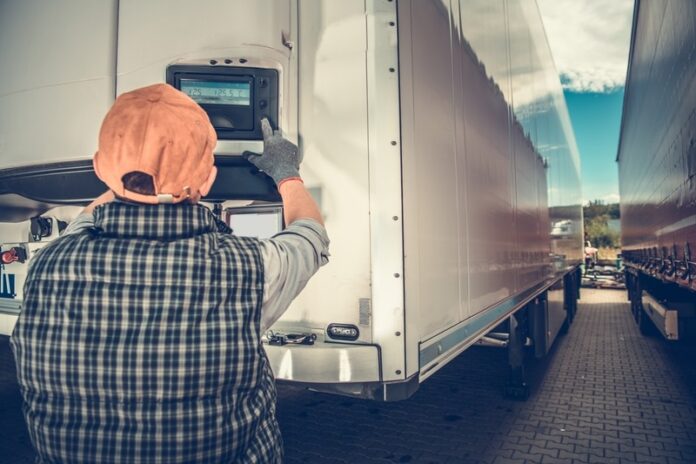
Having a food business from home has its advantages; however, delivering meals or desserts which are perishable goods presents certain challenges. It is important to ensure that these items are fresh and safe for consumption to avoid customers’ complaints. Through temperature-controlled logistics, home business owners can ensure that their products are delivered in the right condition. Here is a step by step guide on how to go through this process from the beginning to the end.
Understanding Temperature-Controlled Logistics
First of all, let’s define what temperature-controlled logistics is all about. This process entails ensuring that your products are maintained at a certain temperature during transportation. Regardless of whether you have freshly made meals or frozen pastries, temperature control allows the products to remain fresh, tasty and safe for consumption. This can only be achieved by having the right cooling equipment such as the insulated containers or refrigerated vans.
Why the Right Partner Matters
Selecting a good logistics provider is critical in determining the success of your delivery strategy. That is why it is crucial to collaborate with the companies like Run It Cool which provide the temperature-controlled logistics services. They provide services that are aimed at maintaining the freshness and quality of products that require certain temperature conditions. Not all courier services can transport perishable products and therefore it is important that you do your homework and identify which courier service providers are capable of handling your products.
Packaging for Protection
Packaging is not just a ‘nice to have’ add-on; it is an essential part of making sure that your product gets to its destination in pristine condition. One way of maintaining the temperature throughout the journey is to use insulated boxes or containers with thermal pads. For frozen items, you can use gel packs or dry ice to keep the temperature low, and an airtight container to keep your food from spoiling. Each layer of protection that you add is a shield between your goods and the outside world.
Tracking and Monitoring
Once your package is in transit, monitoring its temperature is critical. Temperature monitoring is one of the services that many of the contemporary delivery services provide as a part of their services. It is comforting to know that your products are being monitored during transit and any abrupt change in temperature will be recorded and addressed. Thus, investing in a logistics partner providing these monitoring services guarantees the transparency throughout the process.
Choosing the Right Transportation Method
When it comes to small home businesses, people often think that any courier service will be sufficient. However, perishable goods require more delicate handling when it comes to transportation. For instance, refrigerated vehicles are crucial in delivering frozen meals or ice cream. On a smaller scale, you can use temperature controlled vans or motor cycles with cold storage to make same day deliveries. Assess the requirements of your products and match them with a transport mode that best suits the need of the products.
Timing Is Everything
Although temperature regulation is a key factor, timing is equally important. In order to prevent unnecessary fluctuations in temperature, perishable goods should be delivered as soon as possible. The time taken during delivery also affects the quality of the product upon delivery, especially during summer; it is therefore advisable to plan your delivery routes well. Another way is to schedule deliveries during cooler parts of the day or pay for expedited services to keep your product intact.
Communication with Customers
It is important to keep customers informed of the measures being taken to protect their products, and this will help to build trust. Sharing tracking information, approximate delivery times, and information about your temperature-controlled logistics can help build a better relationship with your clients.
Minimizing Waste and Maximizing Freshness
Logistics planning can reduce the risks of spoilage or wastage, which is a major factor that affects the company’s financial position. Through proper regulation of temperatures and timely delivery, home business owners can guarantee that only fresh foods are delivered to customers. Less loss leads to more customer satisfaction and consequently, increased profitability. Each stage of temperature-controlled logistics is aimed at maintaining the quality and increasing the shelf life of your goods.
Sustainability Considerations
The use of temperature controlled logistics does not necessarily mean the environment has to be negatively impacted. The current market has a wide range of environmentally sustainable packaging materials ranging from biodegradable insulation to reusable cooler packs. Selecting sustainable materials not only fits into the current trends and preferences but also reduces the impact on the environment. Consumers are more aware of the effects that companies have on the environment, and your action in this respect could enhance customer loyalty.
Conclusion: The Final Mile
The safe delivery of temperature-sensitive products is not just a matter of packing and shipping but a complex process. By selecting the right logistics provider, proper packaging, and timely and closely supervised deliveries, home businesses can provide their customers with high quality and safe products from the kitchen to the doorstep. In a world where time equals money, it is not a luxury but a necessity to have proper control over temperature sensitive logistics.
Find a Home-Based Business to Start-Up >>> Hundreds of Business Listings.
















































